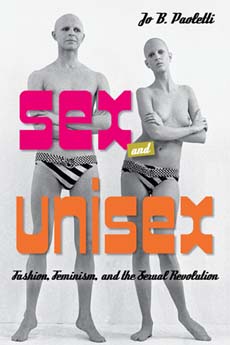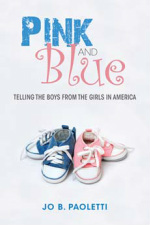|
One of the most vexing aspects of the book as been how to raise the question of sexuality. I'm not just talking about the way that gendered clothing can tend to slide into sexualized clothing (think Toddlers and Tiaras and the Huggies Denim Diaper ad). The gender binary pink and blue world reflects a heteronormative -- and homophobic -- construct of children's sexualities.The writings of G. Stanley Hall and other early psychologists were very clear in their view of male homosexuality as deviant, dangerous and preventable, but usually the sexual messages in children's clothing fly under the radar. Another aspect of this issue is how gendered clothing -- particularly the strongly binary landscape we've bee in since the late 1980s -- is experienced by those children who do not conform to traditional gender constructs. Tomboys, girlish boys, intersex children -- what does pink and blue mean to them? My Find of the Day in my Google alert of "neutral clothing" was Aly Windsor's post "Parenting outside the gender binary". Windsor and her partner are raising their son Avie to be as "unrestrained by gender as possible", and it's an interesting and thought-provoking post for anyone who thinks pink and blue clothing (and a serious lack of neutral options) is just harmless fashion.
JoyceD
9/8/2010 06:59:56 am
The Toddlers and Tiaras and the Huggies Denim Diaper links were funny and freaky. I was a family day care provider for 12 years, and those it's only subjective observation, but though I tried my best not to use stereotypical gender roles with the children I cared for, boys were the first ones to pick up sticks and use them for guns when I had none around. They also were more physically aggressive in the infant/toddler age. Though this may not have that much affect on the overall nature of fashion, I'm wondering if you looked at research related to this and theorized on how this could affect appearance choices. Comments are closed.
|
Jo PaolettiProfessor Emerita Archives
January 2023
Categories
All
|
| Follow me! |


